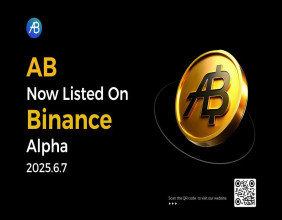Due to pandemic COVID-19, the S&P/ASX 300 tumbled by ~51% from 7115.686 on 20 February 2020 to 4702 on 19 March 2020. It’s not only ASX but NASDAQ and TSX, to mention few, that too are witnessing similar trends. The stock markets across the globe are on a free fall roller coaster ride due to coronavirus outbreak, that started from Wuhan, capital of Central China’s Hubei province.
The spread of coronavirus to almost every country is impacting the livelihood due to suspension of travelling, lockdown of cities, evasion of restaurant and hospitality, among other restrictions. The intensity of the global impact can be easily gauged by the fact that Brent Crude (BZ: NMX) fell by ~58% to US$24.88/b from 20 February 2020 to 18 March 2020.
Amidst the global economy fall signalling financial crisis, investors are also worried about the capital allocation decisions of the companies to improve shareholder return. In a market with falling interest rates and stock prices, firms also look for ways to deploy capital efficiently. Some of the choices that the board has to make is whether to give dividend or acquire new project. Interestingly, firms dealing with commodity mining businesses tend to go for acquisition of mining projects during times of falling commodity prices while more exploration/capex during the commodity up cycle.
Having said that, companies often prefer to buy-back their shares to improve the shareholder value, reducing the total number of shares in the open market. Buyback is of two types, i.e. off-market buyback and on-market buyback. Off-market buyback is generally attractive for low tax-paying shareholders, as investors at higher marginal tax rates must pay ‘top-up’ tax on dividend received and thus less likely to participate in off-market share buyback schemes.
Also, off-market buyback enables companies to buy back their shares at a lower market price, where the repurchase price is in the form of fully franked dividend, benefitting and motivating low-tax investors to participate in the buy-back programme. However, in the case of the on-market buyback, the Companies purchases its share on the prevailing market price on the respective stock exchange.
Interesting Read: Big Story of Kalkine - Value Investing amidst Market Correction
One Question May Arise - What Are the Benefits of Buyback?
There are mainly four reasons due to which companies launch the buy-back schemes, including improved shareholder value, share price improvement, tax benefit, and building positive confidence among investors.
Improved Shareholder Value: In a falling share price environment, a company may feel that its shares are undervalued, due to which it opts for buyback, which reduces the number of outstanding shares in the market. The process involving reduction in the number of shares and maintaining the same level of profitability may increase EPS.
How?
The shareholders who didn’t sell their holdings will have a higher portion of ownership of the firm and thus, a higher price per share. This also aids in rewarding employees and management by issuing the buy-back shares to them, as means of stock reward or stock option. This is a bone of contention amongst those who oppose or favour buy backs.
How P/E increases in case of buyback?
Let’s consider firm A has earning of A$10 million and outstanding shares of 10 million before buyback, with EPS of A$1 trading at A$10 at P/E of 10. Now, suppose firm A buybacks 10% of its outstanding share, i.e. 1 million keeping all other factors same. This will result in EPS of A$1.11. Interesting now to keep the same P/E, the share is required to trade at up by 11%, i.e. ~A$11.1.
Share Price Improvement: Sometimes, firm buyback shares at the time of undervalued and reselling them once share price increases to reflect the value of the Company. The increase in EPS delivers positive sentiments among the investors and generally share price seems to improve post the announcement of the buyback, or in simple term, less supply tends to cater the demand increases the share price.
The Benefit of Tax: Another exciting aspect of opting buyback instead of dividend distribution to the shareholder is to have the option to defer capital gains if the price of share increases. Buyback is usually taxed at the capital gain and dividend at income tax, and if the shareholders have held the share for one year, then the gain due to buyback may be subject to lower capital gain.
Cash Reserves: The other viewpoint arises that the buyback signals the market that the Company has excess cash in hand, and there is no need to worry about the cashflow. Also, it aids in gaining investors’ confidence as the firm opt for reimbursement of shareholders than investing in any other assets, which in turn, help in improving the share price and lasting security for investors.
Is Buyback Always Advantageous?
With every pro comes with cons, sometime buyback is used as a method to artificially increase the share price as an executive earning are often linked to the earnings metrics. Also, it is worth mentioning the boost in share price due to buyback tends to benefit the short term investors as well as long-term stance. It is more important to consider the valuation at which the Company is buying back its shares, buying back shares at high valuation is value destroying for the shareholders.
Having said that, buyback do provide benefit to investors in term of shareholder value, improvement in share price and lastly tax benefit. However, the investors should gauge through the Company’s fundamentals and historical record for long term association and value creation.
Due to the Advent of COVID-19 Market Crashing, Do We Have Any Live Example Related to Buyback and Acquisition?
Yes, we do! ASX listed Viva Energy (ASX: VEA) on 18 March announced that the Company intend to return A$680 million after-tax cash proceeds from the sale of its investment in Viva Energy REIT to the shareholders through both off-market buyback and on-market buyback. The off-market buyback details to be provided to the shareholders post the relevant regulatory approvals.
Viva Energy plans to launch on-market buyback before the off-market buyback programme. The on-market buyback is likely to commence post the trading update of Viva concerning March 2020 quarter-end. The announcement is expected to start and remain open for 12 months beginning 2 April 2020.
The buyback of number od outstanding share is subject to the share price and market conditions. Also, amid the buyback phase, shareholder retaining its share in Company is likely to benefit via increment of voting power and improved EPS.
In the last three months, VEA stock return negative 36.39%. Presently stock is trading at A$1.337 (AEDT: 01:31 PM) on 20 March 2020. Its 52 weeks high and 52 weeks low stand at A$2.57 and A$1.185, respectively, and has a market cap of A$2.43 billion.
Do You Know, WHO Typifies the COVID-19 As Pandemic and Evaluates the Outburst Net to Spread
OFX Group Limited (ASX: OFX) updated a healthy turnover and transaction volumes in February and March to date, i.e. 18 March 2020 witnessed due to the COVID-19. The EBITDA for FY20 is anticipated to be between A$36.8 - A$38.3million.
At the time of uncertainty, OFX an international payment and foreign exchange service Company believes in delivering positive EBITDA and stable NOI margins excluding IPS. OFX expects to have A$56million net cash in hand due to which the Company recently entered into discussions about possible M&A activity, which is confidential and presently discontinued amid the uncertainty in the equity market.
The Company is expected to provide further update on FY20 result by May 2020.
In the last three months, OFX stock returned negative 9.93%. Presently stock is trading at A$1.28 (AEDT: 01:31 PM) on 20 March 2020. Its 52 weeks high and 52 weeks low stand at A$1.93 and A$0.905, respectively, and has a market cap of A$304.7 million.





